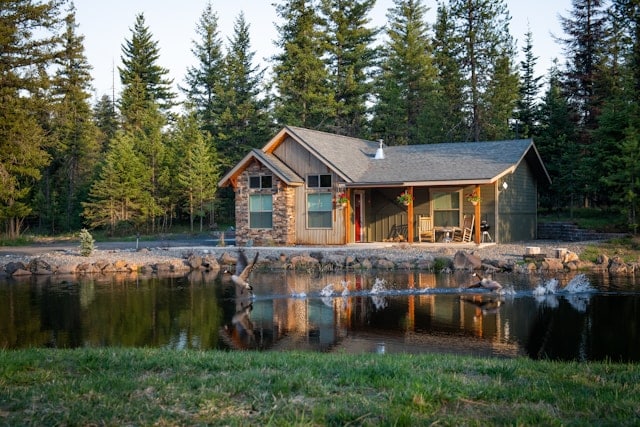What’s the Most Sustainable Way to Heat a Conservatory in Winter?

As winter approaches, many of you start looking for ways to keep your conservatories warm and cosy. A lot of times, you might find yourself battling with high energy bills and inefficient heating systems. This article sheds light on the most sustainable ways to heat a conservatory during the colder months. We will delve into different types of heating systems, their energy efficiency, and how they can be integrated into your conservatory to create a warm and comfortable space.
Understanding the Challenges of Heating a Conservatory
Heating a conservatory can be fraught with challenges. These airy structures, often composed of large glass panes, lose heat much faster than other parts of the house. Moreover, conservatories are often not included in the central heating system, which further adds to the difficulty of maintaining a steady temperature.
Cela peut vous intéresser : How to Design a Home Coffee Bar That Rivals Your Favorite Cafe?
One of the main problems with heating conservatories is energy inefficiency. The large glass windows and doors can let a lot of heat escape, making it harder for the heating system to keep the space warm. Furthermore, the typically open-plan layout of a conservatory can also contribute to heat loss.
Another challenge is maintaining a comfortable temperature without incurring exorbitant energy costs. Traditional heaters can quickly heat up a space but are notorious for consuming a lot of electricity. Additionally, they often don’t distribute heat evenly, leaving some areas of the conservatory much cooler than others.
Avez-vous vu cela : How to Create a Safe Indoor Play Area for Toddlers in a Small Apartment?
Sustainable Options for Heating Your Conservatory
There are several sustainable options for heating a conservatory that you can consider. These methods can help you maintain a comfortable temperature while also reducing your energy consumption and ultimately your energy bills.
Electric Radiators
Electric radiators are an excellent option for conservatories due to their efficiency and versatility. They convert almost all of the electricity they consume into heat, making them a very energy-efficient option. Electric radiators also offer the flexibility to be used as a standalone heating system or in conjunction with your home’s central heating system.
The best part about electric radiators is their ability to heat specific zones instead of the entire space. This feature allows you to focus the heat where you need it most, saving you energy and money.
Underfloor Heating Systems
Underfloor heating systems are another viable option for heating conservatories. They provide an even distribution of heat throughout the space and can be used in conjunction with other heating systems.
Underfloor heating systems use either electric cables or water pipes to heat the floor, which then radiates the heat upwards, warming the entire room. This method of heating provides a comfortable temperature at a lower overall heat setting, making it more energy-efficient than traditional heating methods.
Solar Heating
Solar heating offers an eco-friendly way to heat your conservatory. Solar panels on the roof of the conservatory can capture sunlight and convert it into heat. This heat can then be used to warm the space, reducing the need for other heating methods.
While the initial investment in solar heating can be quite high, the long-term savings in energy costs make it a highly sustainable and cost-effective option.
The Role of Insulation in Keeping Your Conservatory Warm
It’s vital not to overlook the importance of insulation when thinking about how to heat your conservatory sustainably. Insulation helps to retain heat and reduce energy consumption, making it a key component in any heating strategy.
Roof insulation can be especially effective in a conservatory, where a large proportion of heat is lost through the roof. There are several types of roof insulation available, including insulated panels and thermal blinds.
Insulated panels are attached to the inside of the conservatory roof, forming a barrier that helps to keep heat in and cold out. Thermal blinds, on the other hand, can be drawn across the roof when required, providing an insulating layer that can significantly reduce heat loss.
Insulating the floors and walls of the conservatory can also be beneficial. This can be achieved through the use of insulated plasterboard, or by incorporating insulation into the structure of the conservatory itself.
The Importance of Ventilation in a Heated Conservatory
While keeping your conservatory warm in the winter is essential, it’s equally important to ensure that it’s well ventilated. Without ventilation, heat can become trapped, leading to condensation and potentially dampness or mould.
Conservatories are typically well ventilated due to their design. However, if you’re using a heating system in your conservatory, it’s a good idea to ensure that ventilation is not compromised.
There are several ways to achieve this. You can install trickle vents in the windows or use a mechanical ventilation system. Alternatively, you could use an air source heat pump, which provides both heating and ventilation.
Remember, maintaining a comfortable temperature in your conservatory in the winter is not only about heating. It’s also about using sustainable, energy-efficient methods, and ensuring that your conservatory is well insulated and ventilated. With a little planning and the right approach, you can look forward to a cosy and eco-friendly conservatory this winter.
Effective Maintenance of Your Conservatory Heating Systems
The longevity and efficiency of your heating system are significantly reliant on proper maintenance. To keep your conservatory warm and cosy all year round, it’s crucial to regularly service and maintain your heating solutions.
For electric radiators, it is advisable to clean the filters at least once a year to maintain their efficiency. Dust and debris accumulation can reduce the performance of the radiator, leading to increased energy consumption and sub-optimal heating. Additionally, periodic checks for any faults or malfunctions could be instrumental in avoiding unexpected breakdowns in the colder months.
Underfloor heating systems also require routine inspection and maintenance. Since the system lies beneath the floor, visual inspections might not be feasible. Therefore, it is recommended to hire professionals who can use thermal imaging cameras to detect any inconsistencies in the heat distribution or potential leaks in the system.
Lastly, solar heating systems need occasional cleaning to ensure they’re capturing sunlight effectively. Dust and debris on the solar panels can reduce their efficiency. It’s also a good idea to check that the panels are securely fastened and that the wiring is in good condition.
Remember, regular maintenance can help prolong the life of your heat conservatory system, ensure energy efficiency and save cost in the long run.
Conclusion: A Warm and Sustainable Conservatory is Achievable
A conservatory is a fantastic space to enjoy nature’s beauty all year round. But keeping it warm and cosy in the winter months can be a challenge. However, with the right heating solution, insulation, and ventilation, you can create a comfortable and energy-efficient space.
Electric radiators offer flexibility and zone-specific heating, making them an efficient standalone heating solution for your conservatory. Underfloor heating systems provide an even distribution of heat, creating a warm and comfortable environment. And solar heating harnesses the power of the sun, offering a sustainable heating solution that reduces reliance on traditional energy sources.
Insulation plays a key role in conservatory heating. It prevents heat loss through the conservatory roof, walls, and floor, thereby boosting energy efficiency. Similarly, ventilation ensures the heated space doesn’t become too humid or cause condensation issues.
Finally, maintaining your heating system is crucial to ensure it operates efficiently. Regular cleaning and servicing can prolong the life of your heating system and keep your conservatory warm and inviting all winter.
In conclusion, heating your conservatory sustainably is not just about choosing an energy-efficient heating system, but also about implementing effective insulation, ensuring proper ventilation, and maintaining the system well. With some careful planning and consideration, you can look forward to a cosy, eco-friendly conservatory, not just this winter, but for many winters to come.
